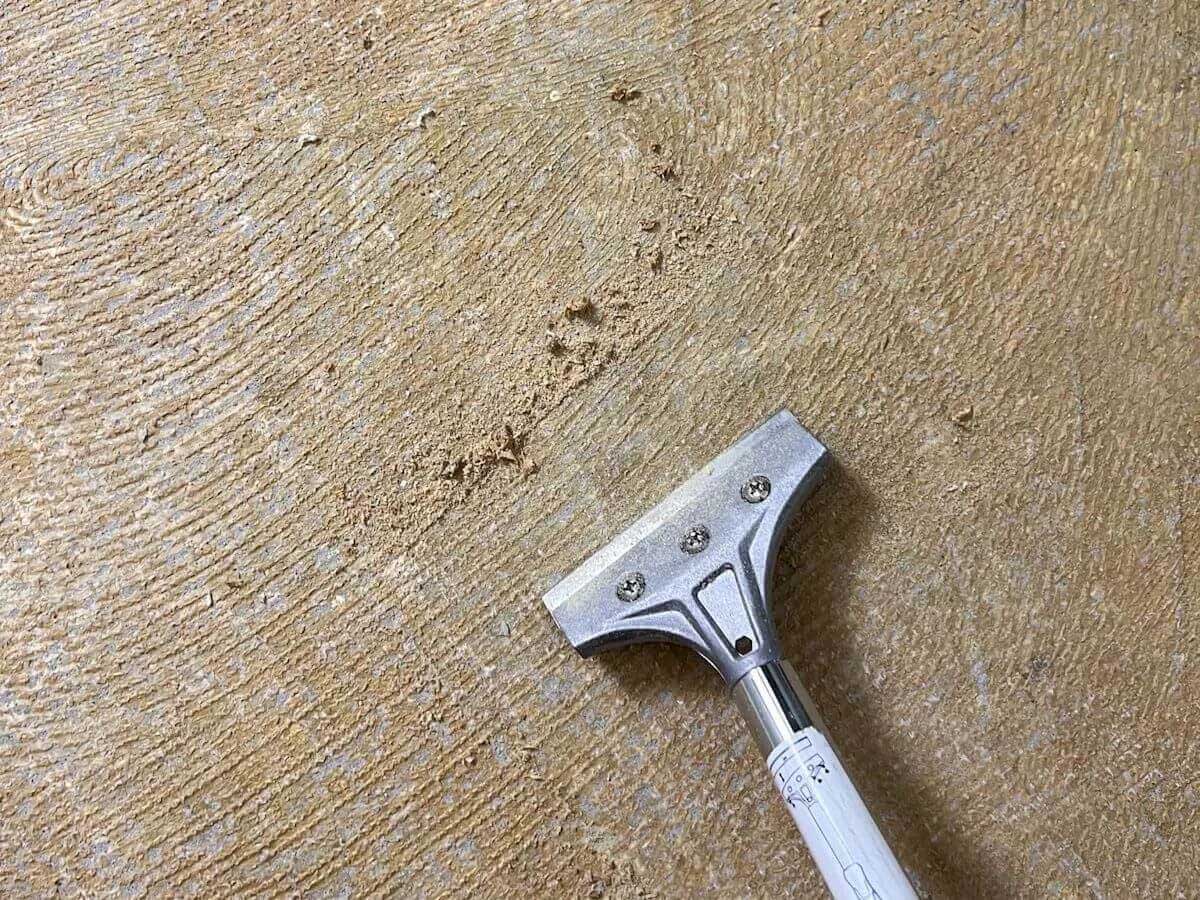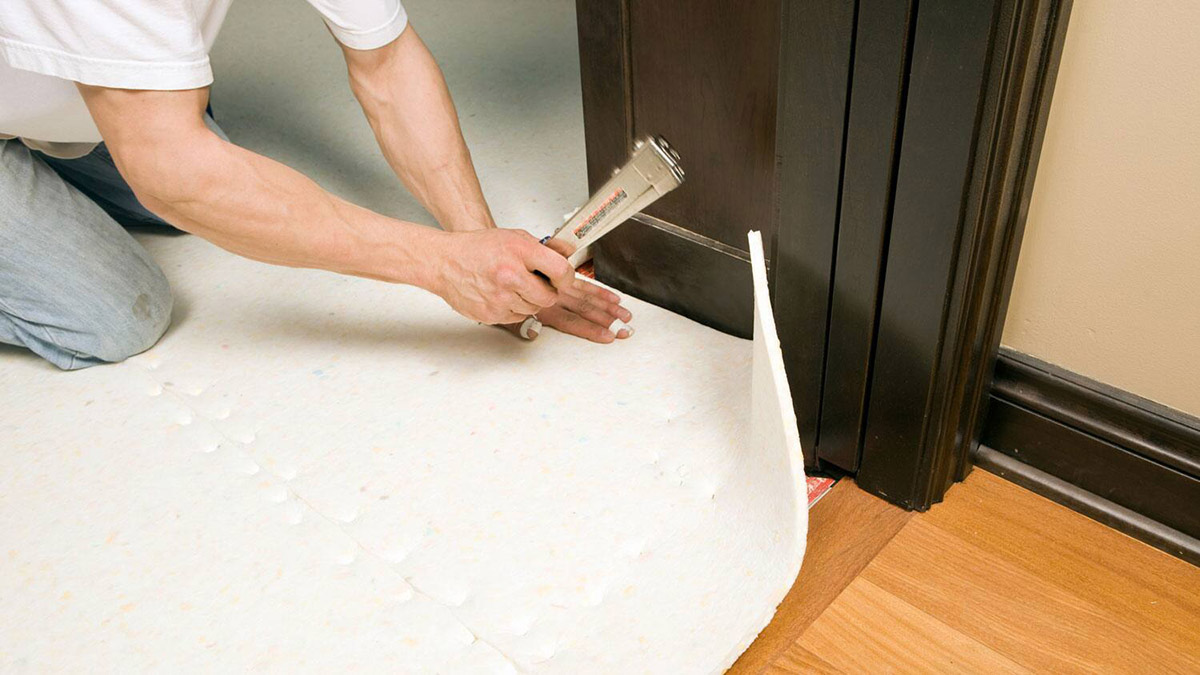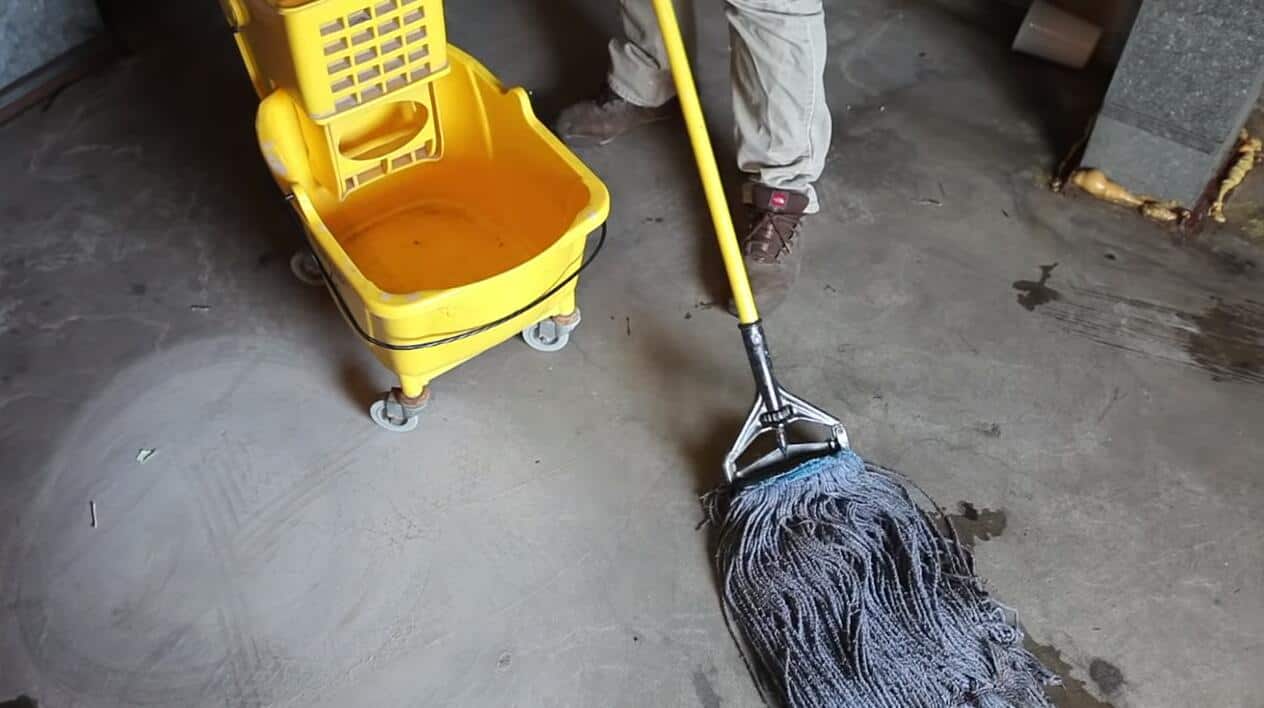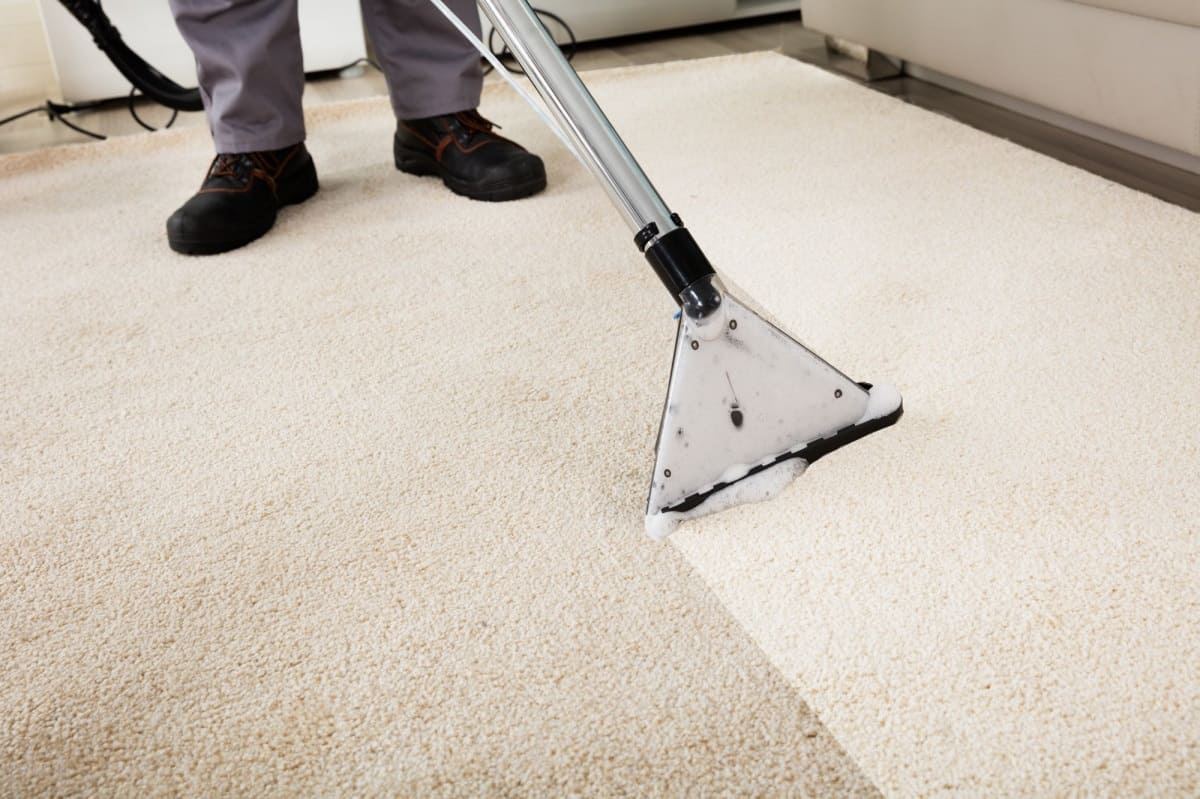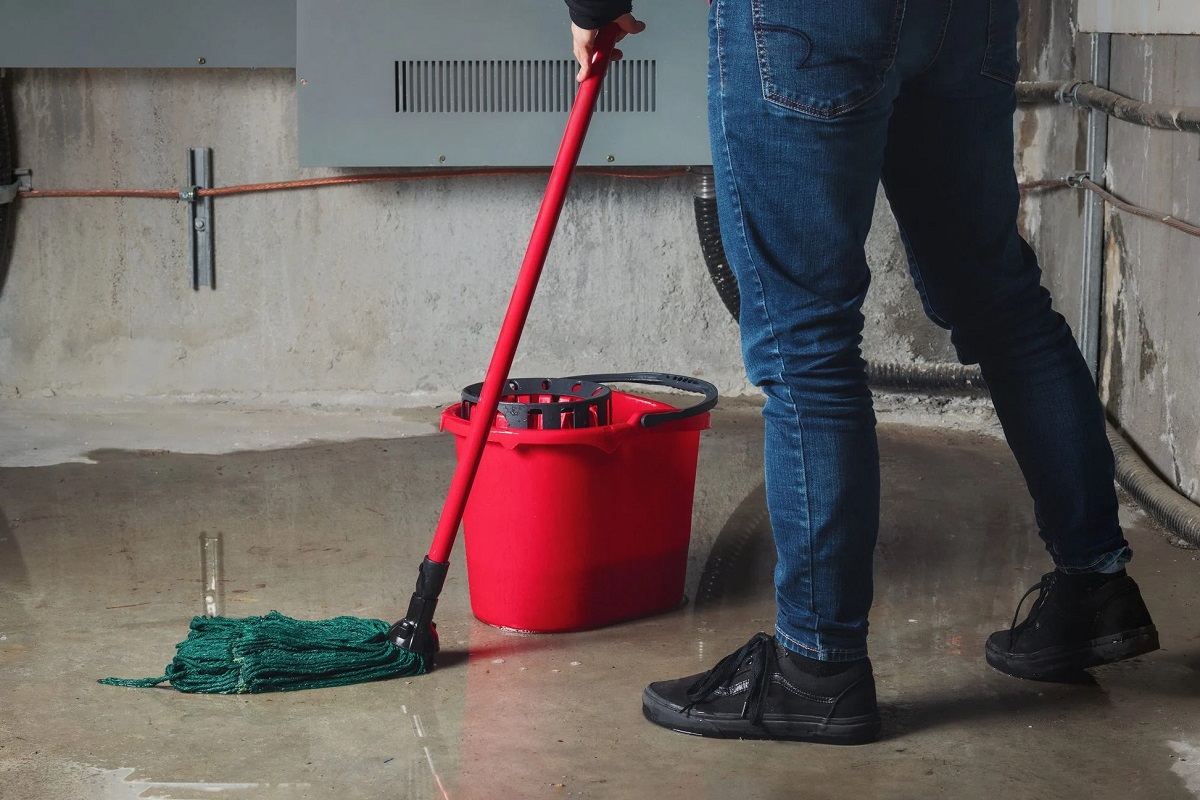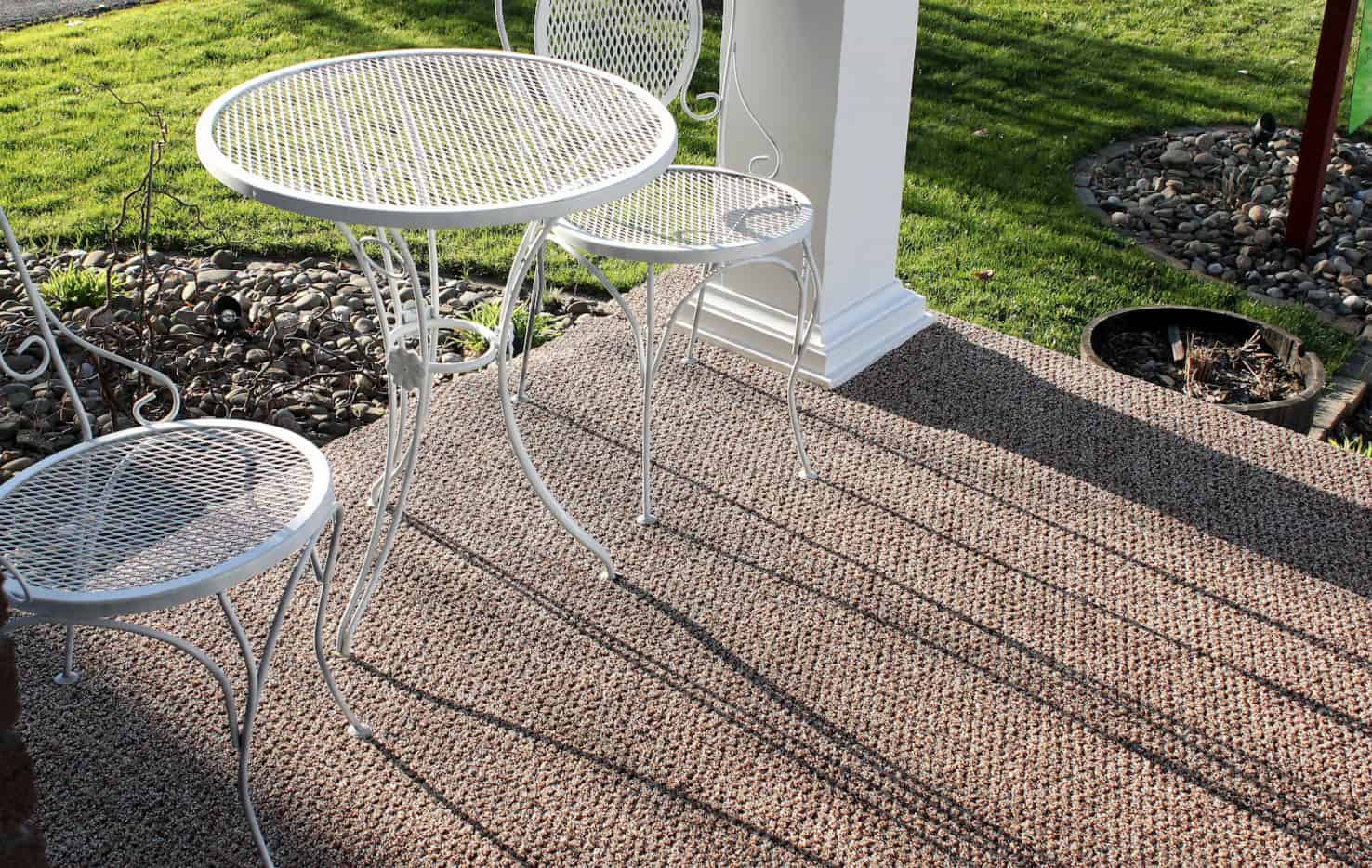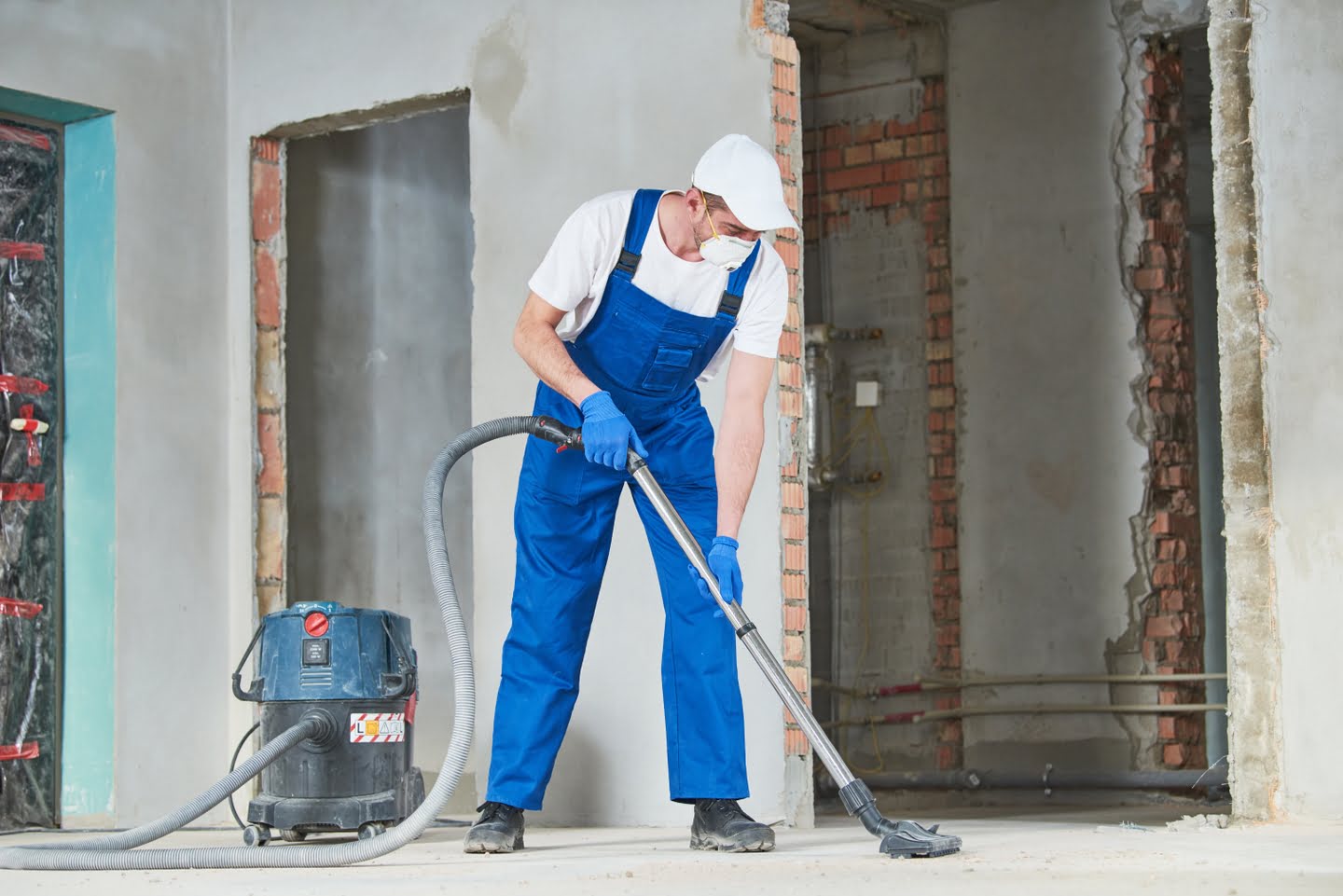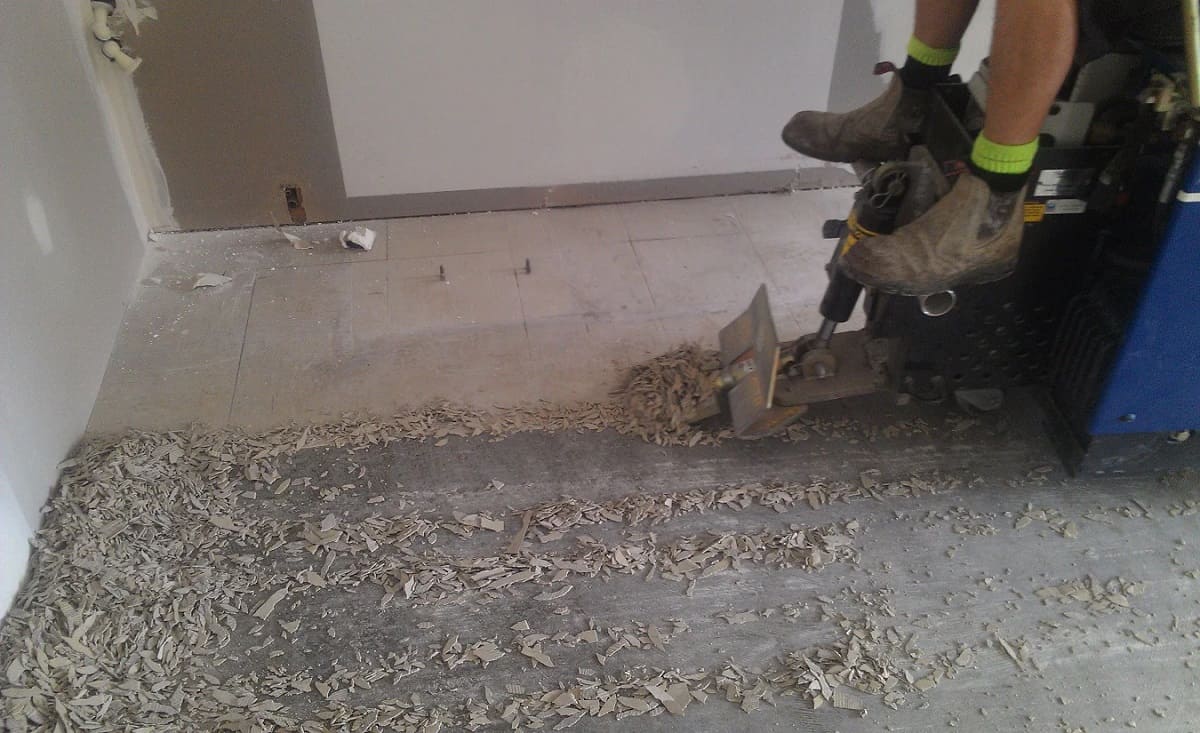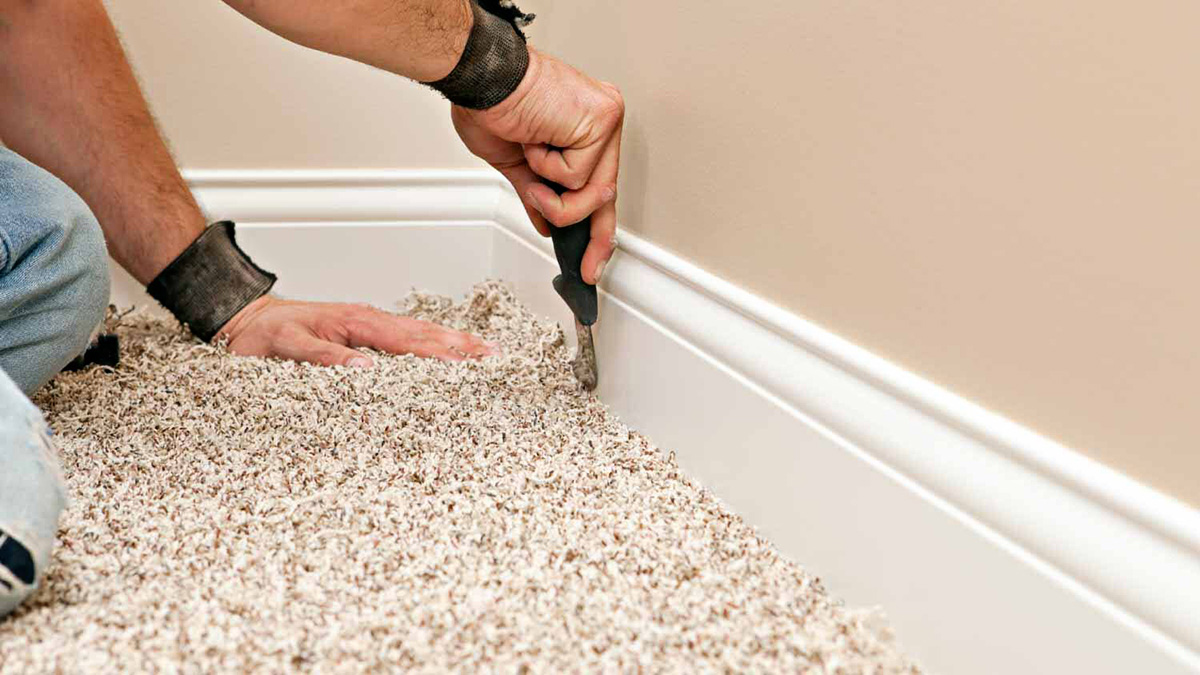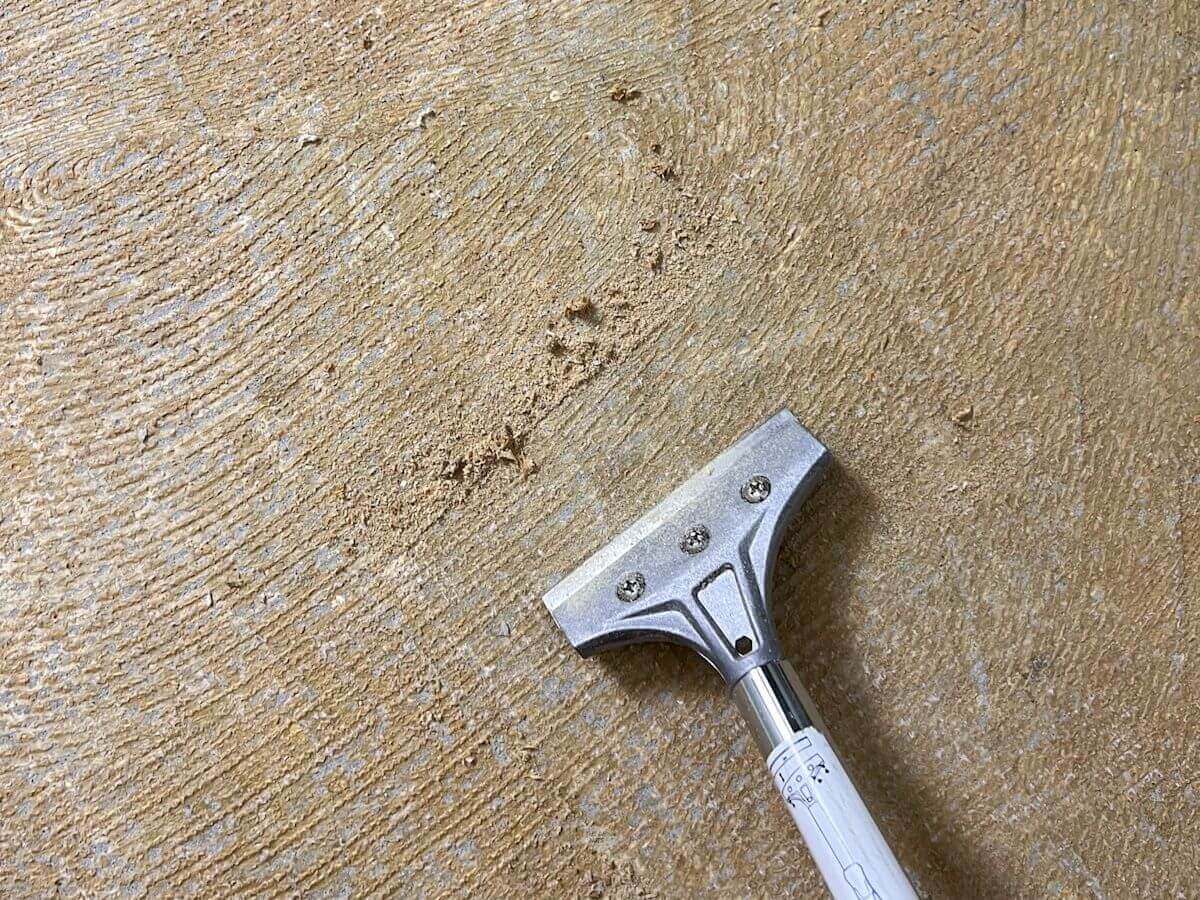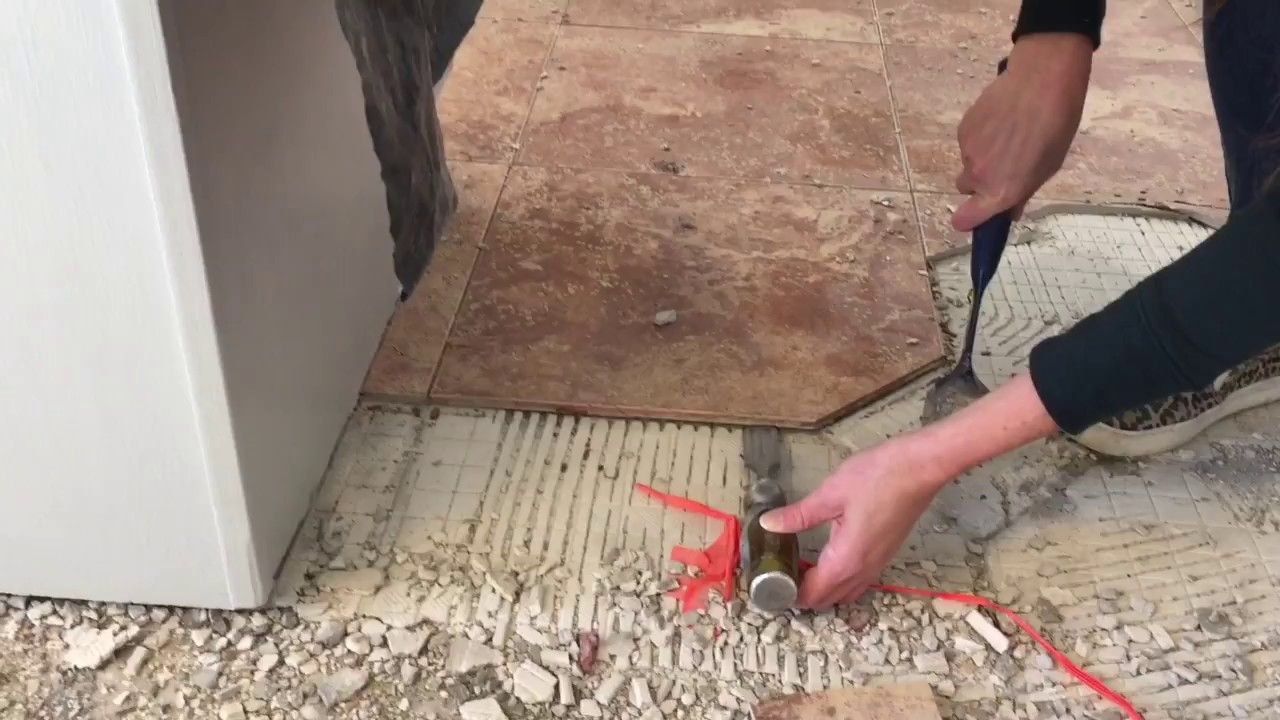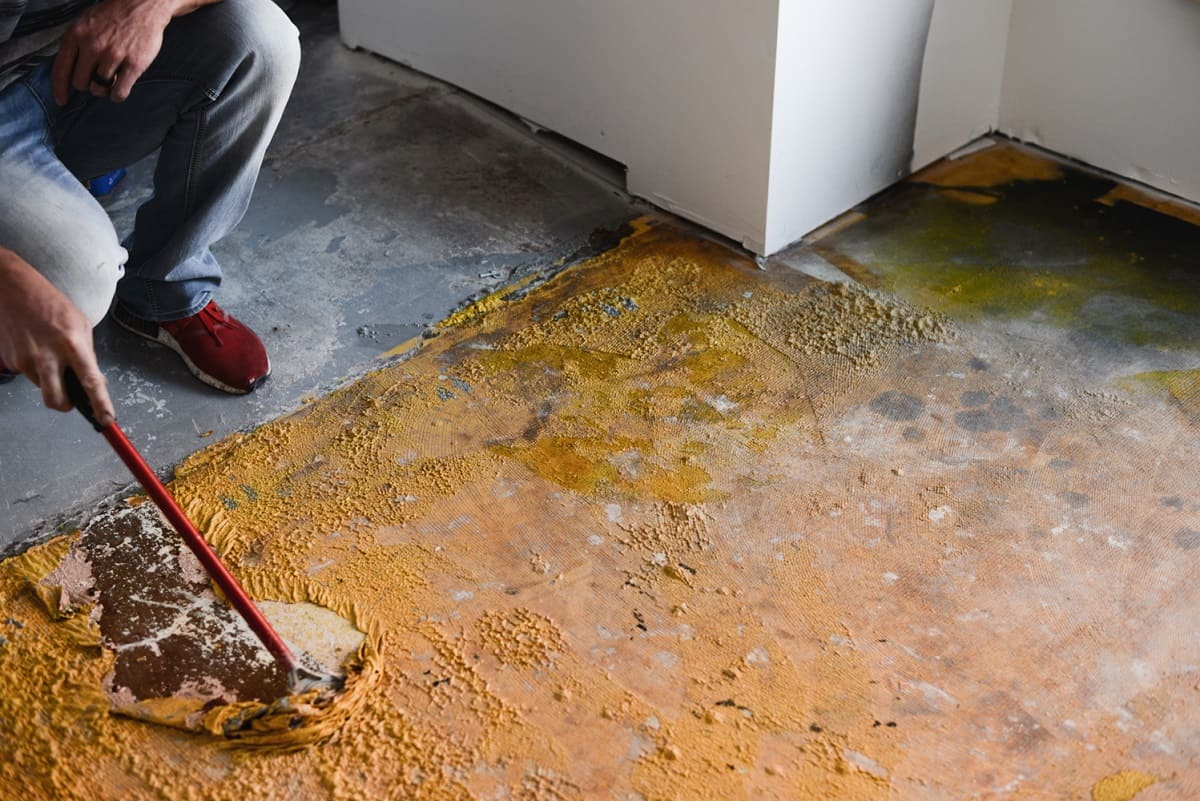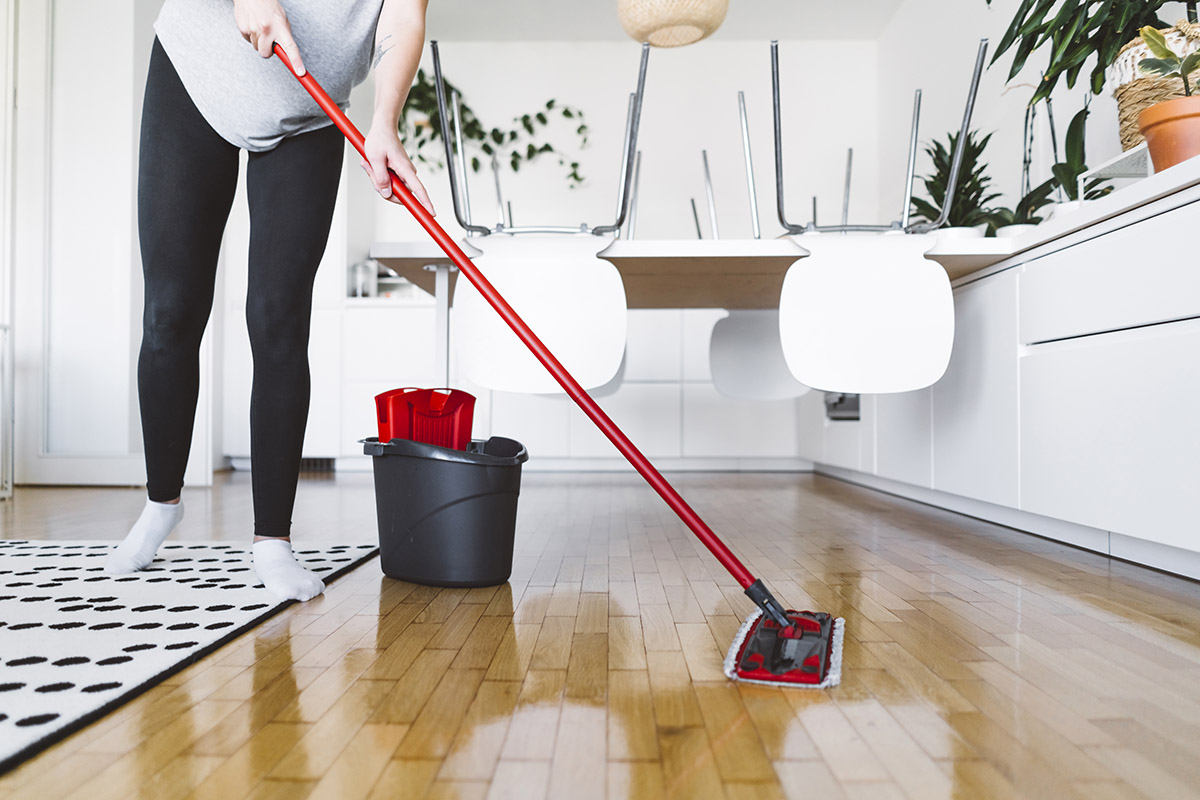Home>Articles>How To Clean A Concrete Floor After Removing Carpet
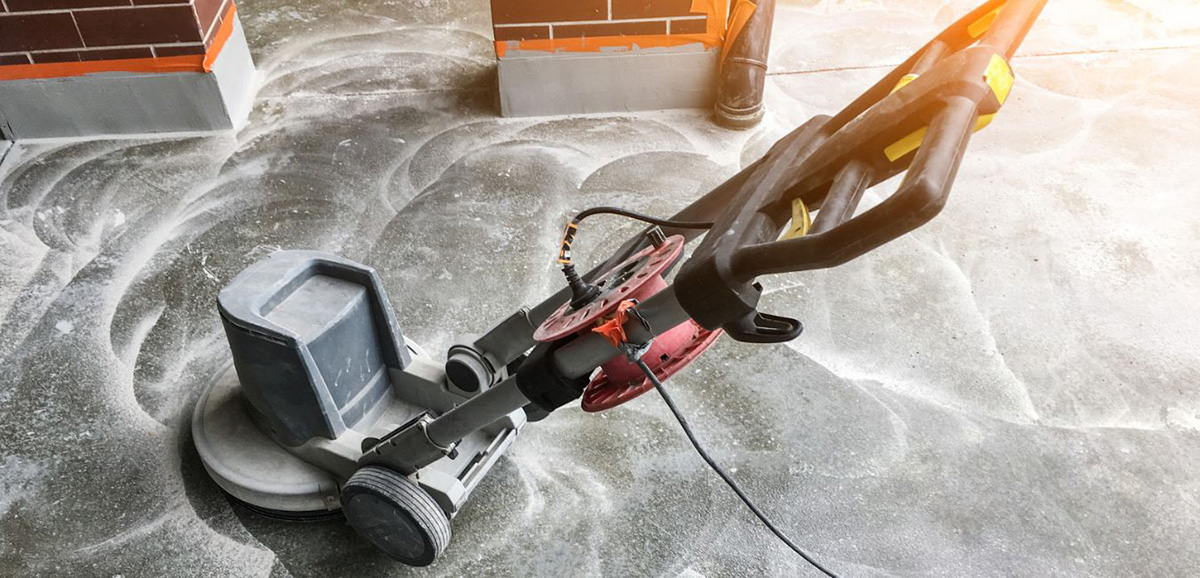

Articles
How To Clean A Concrete Floor After Removing Carpet
Modified: March 24, 2024
Learn effective techniques for cleaning a concrete floor after removing carpet with our informative articles. Keep your floors spotless and looking their best!
(Many of the links in this article redirect to a specific reviewed product. Your purchase of these products through affiliate links helps to generate commission for Storables.com, at no extra cost. Learn more)
Introduction
When you remove carpet from a concrete floor, you may be left with remnants of adhesives and stains that need to be properly cleaned. Cleaning a concrete floor after removing carpet not only improves the overall appearance, but it also prepares the surface for any future flooring options, such as tiles or hardwood. In this article, we will guide you through the step-by-step process of cleaning a concrete floor effectively, leaving it spotless and ready for a fresh start.
Before diving into the cleaning process, it’s important to gather all the necessary tools and materials to make your job easier. Having the right equipment at hand will ensure that you can efficiently tackle the task and achieve the best results. Let’s take a look at the tools and materials needed:
- Broom or vacuum cleaner
- Stiff-bristle brush or scrub brush
- Bucket
- Mop or sponge mop
- Concrete cleaner or degreaser
- Water
- Gloves
- Protective eyewear
With these tools and materials ready, let’s proceed to the next step – preparing the area.
Key Takeaways:
- Thoroughly prepare the area, remove remnants, and scrub stubborn stains to effectively clean a concrete floor after carpet removal. Follow step-by-step instructions for a spotless and revitalized surface.
- Utilize the right tools, from brooms to concrete cleaners, to achieve optimal cleaning results. Exercise caution, persistence, and attention to detail for a clean and vibrant concrete floor.
Tools and Materials Needed
Before you start cleaning a concrete floor after removing carpet, make sure you have the following tools and materials readily available:
- Broom or Vacuum Cleaner: You will need either a broom or a vacuum cleaner with a hard surface attachment to remove loose debris and dirt from the floor.
- Stiff-Bristle Brush or Scrub Brush: A stiff-bristle brush or a scrub brush will come in handy when it’s time to scrub and remove tough stains or adhesive residue from the concrete.
- Bucket: You will need a bucket to mix the cleaning solution and to hold water for rinsing the floor.
- Mop or Sponge Mop: A mop or sponge mop will be used to apply the cleaning solution to the floor and for general mopping purposes.
- Concrete Cleaner or Degreaser: Use a specialized concrete cleaner or degreaser to effectively remove any remaining stains, grease, or adhesive residue from the concrete surface.
- Water: You will need a sufficient amount of water for diluting the cleaning solution, rinsing the floor, and ensuring thorough cleaning.
- Gloves: It’s important to protect your hands while working with chemicals and abrasive materials. Wear gloves to safeguard your skin from any potential irritation or harm.
- Protective Eyewear: Safety should always be a top priority. Wear protective eyewear to shield your eyes from any splashes or debris that may occur during the cleaning process.
Having these tools and materials ready will ensure that you have everything you need to effectively clean your concrete floor and achieve optimal results. Once you have gathered all the necessary equipment, it’s time to move on to the next step – preparing the area.
Preparing the Area
Before you begin the process of cleaning a concrete floor after removing carpet, it’s essential to properly prepare the area. This will help ensure that the cleaning process goes smoothly and that you’re able to access all areas of the floor easily. Follow these steps to prepare the area:
- Clear the Floor: Remove any furniture, rugs, or other objects from the concrete floor. Clearing the floor will provide you with a clear and open space to work with.
- Open Windows and Doors: If possible, open windows and doors to allow for proper ventilation. This will help with air circulation and prevent any buildup of fumes from the cleaning products you’ll be using.
- Mask Off Adjacent Areas: If there are any adjacent areas, such as walls or baseboards, that you want to protect from cleaning solution or potential splashes, use painter’s tape or plastic sheeting to mask them off.
- Secure Electrical Outlets or Wires: If there are any electrical outlets or wires near the floor, make sure they are secured and protected. Use electrical tape or cover with plastic to prevent any accidents or damage during the cleaning process.
- Check for Cracks or Damage: Inspect the concrete floor for any noticeable cracks, holes, or damage. If you come across any, consider repairing them before proceeding with the cleaning process. This will help ensure a smooth and even surface.
By properly preparing the area, you’ll create a safe and conducive environment for cleaning your concrete floor. Once you’ve completed these steps, you’re ready to move on to the next phase – removing any remnants of carpet and adhesives.
Removing Carpet Remnants and Adhesives
After the carpet has been removed from the concrete floor, you might encounter remnants of the carpet and stubborn adhesive residue. Removing these remnants is crucial to ensure a clean surface for further cleaning and future flooring options. Here’s how you can effectively remove carpet remnants and adhesives:
- Start with Manual Removal: Begin by manually pulling and scraping away any visible carpet remnants. Use a pair of pliers or a scraper to loosen and lift the carpet from the floor. Be careful not to damage the concrete surface in the process.
- Apply Heat: If the carpet remnants are stubborn and difficult to remove, use a heat gun or a hairdryer to soften the adhesive beneath. Apply heat to the affected area for a few seconds and then try lifting the carpet again. The heat will make the adhesive more pliable, making it easier to remove.
- Utilize Adhesive Removers: For adhesive residue that remains on the concrete floor, use an adhesive remover or a citrus-based cleaner. Follow the instructions on the product, apply it to the affected areas, and let it sit for a few minutes to penetrate the adhesive.
- Scrub or Scrape: Use a stiff-bristle brush or a scraper to scrub or scrape off the softened adhesive. Apply some pressure, but be cautious not to damage the concrete surface. Continue this process until you have removed all traces of adhesive from the floor.
- Wipe off Residue: Once the adhesive has been removed, use a damp cloth or sponge to wipe away any residue left on the concrete. This will ensure a clean and smooth surface for the next steps of the cleaning process.
Remember, removing carpet remnants and adhesives requires patience and attention to detail. Take your time to ensure that you have thoroughly eliminated all remnants and adhesive residue. Once you’ve successfully completed this step, you can move on to the next stage – sweeping and vacuuming the floor.
Sweeping and Vacuuming
After removing carpet remnants and adhesives, it’s time to clean up loose debris and dirt from the concrete floor. Sweeping and vacuuming are the first steps to preparing the surface for a deep clean. Here’s how you can effectively sweep and vacuum your concrete floor:
- Sweep the Floor: Start by using a broom with stiff bristles to sweep the entire floor. Sweep in long, even strokes, working from one end of the room to the other. Pay extra attention to corners and crevices where dirt and dust might accumulate. Remove as much loose debris as possible.
- Use a Vacuum Cleaner: Follow up with a vacuum cleaner equipped with a hard surface attachment. Go over the entire floor, focusing on any remaining dirt, dust, or small particles. The vacuum will help capture and eliminate finer particles that may have been missed during sweeping.
- Check Edges and Baseboards: Take a look along the edges of the room and the baseboards. Use a brush attachment on the vacuum cleaner or a handheld brush to remove any dirt or dust that has accumulated in these areas.
- Inspect the Floor: Once you’ve swept and vacuumed, take a moment to inspect the floor. Look for any remaining debris or areas that may need further attention. It’s important to have a clean and debris-free surface before moving on to the next steps.
Sweeping and vacuuming may seem like simple tasks, but they are crucial in preparing the concrete floor for a thorough cleaning. By removing loose debris and dust, you create a clean canvas to work with. With this step completed, it’s time to move on to the main cleaning process – washing the floor.
Washing the Floor
With the loose debris and dirt removed from the concrete floor, it’s time to give it a good wash. Washing the floor will help eliminate any surface stains, grime, and general dirt buildup. Follow these steps to effectively wash your concrete floor:
- Prepare a Cleaning Solution: Fill a bucket with warm water. Add a gentle all-purpose cleaner or a mild detergent to the water. Follow the manufacturer’s instructions for the appropriate dilution ratio.
- Submerge the Mop or Sponge Mop: Dip a clean mop or sponge mop into the bucket of cleaning solution. Wring out any excess liquid, ensuring that the mop is damp but not dripping wet.
- Mop the Floor: Start mopping the concrete floor, moving in a smooth and even motion. Work from one end of the room to the other, making sure to cover the entire surface. Pay extra attention to areas that appear dirtier or stained.
- Change the Cleaning Solution if Necessary: If the water in the bucket becomes dirty or the cleaning solution loses its effectiveness, change the solution to maintain cleanliness as you continue mopping.
- Be Mindful of Excess Water: Concrete floors can absorb water, so it’s important not to flood the surface. Wring out the mop well before applying it to the floor, and avoid leaving standing water on the concrete for an extended period.
Washing the floor will help to remove any remaining dirt and surface stains, leaving your concrete floor looking refreshed and clean. Once you have thoroughly mopped the entire floor, it’s time to move on to the next step – applying a concrete cleaner, if needed.
Use a stiff brush and a mixture of warm water and mild detergent to scrub the concrete floor. Rinse thoroughly with clean water and allow to dry completely before applying any new flooring or sealant.
Applying a Concrete Cleaner
If your concrete floor has stubborn stains, grease marks, or requires additional deep cleaning, applying a concrete cleaner can help to break down and remove tough grime. Follow these steps to effectively apply a concrete cleaner:
- Select a Suitable Concrete Cleaner: Choose a concrete cleaner that is specifically designed for your needs. There are different types of concrete cleaners available, such as alkaline-based, acid-based, or enzymatic cleaners. Read the instructions and recommendations on the product to ensure it’s safe and suitable for your concrete floor.
- Dilute the Cleaner, if Necessary: Some concrete cleaners may require dilution. Follow the manufacturer’s instructions to determine the correct dilution ratio. Mix the cleaner with water in a separate container, if needed.
- Apply the Cleaner: Pour the prepared cleaner solution onto the stained or soiled areas. Use a sponge, brush, or mop to apply the cleaner, ensuring that the affected areas are thoroughly covered. Allow the cleaner to sit on the surface for the recommended amount of time, as specified by the product instructions.
- Scrub the Stained Areas: After letting the cleaner penetrate the stains, use a stiff-bristle brush or a scrub brush to scrub the affected areas. Apply some pressure while scrubbing to help loosen the grime or stains. Work in small circular motions to effectively lift and remove the dirt.
- Let the Cleaner Work: After scrubbing, let the cleaner sit on the surface for a few minutes to continue working. This will ensure that the deep-down dirt and stains are thoroughly tackled.
Applying a concrete cleaner allows for targeted stain removal and deep cleaning of the concrete floor. Once you have successfully applied the cleaner and scrubbed away the stains, it’s time to move on to the next step – rinsing and drying the floor.
Scrubbing the Floor
After applying a concrete cleaner and letting it sit for a few minutes, it’s time to scrub the floor to remove any remaining dirt, stains, or grime. Scrubbing the floor will help to ensure a deep and thorough cleaning. Follow these steps to effectively scrub your concrete floor:
- Prepare a Clean Bucket of Water: Fill a clean bucket with warm water. You will use this water for rinsing the floor after scrubbing.
- Use a Stiff-Bristle Brush or Scrub Brush: Select a stiff-bristle brush or a scrub brush that is appropriate for the size of the floor and the extent of the cleaning required. Ensure that the brush is suitable for use on concrete surfaces.
- Dip the Brush in Water: Dip the brush into the bucket of clean water, ensuring that the bristles are thoroughly saturated but not dripping wet.
- Start Scrubbing: Begin scrubbing the floor, working in small sections at a time. Use firm pressure and scrub in back-and-forth or circular motions to thoroughly agitate and remove any remaining dirt or stains. Pay extra attention to high-traffic areas or spots with noticeable stains.
- Periodically Rinse the Brush: As you scrub, rinse the brush in the clean water to remove any dirt or debris that may have accumulated on the bristles. This will help to maintain the effectiveness of the scrubbing process.
- Continue Scrubbing the Entire Floor: Repeat the scrubbing process across the entire concrete floor, gradually moving from one section to another until the entire surface has been thoroughly scrubbed. Take breaks as needed but aim to maintain a consistent and even scrubbing pattern.
Scrubbing the floor is an essential step in achieving a deep and thorough clean. By using a stiff-bristle brush or scrub brush and applying firm pressure, you can effectively remove stubborn dirt and stains from the concrete surface. Once you have completed this step, it’s time to move on to the rinsing and drying process.
Rinsing and Drying the Floor
After scrubbing the concrete floor, it’s important to thoroughly rinse away any residual cleaning solution, dirt, and grime. Rinsing will help to ensure that the surface is clean and free of any remaining residue. Follow these steps to effectively rinse and dry your concrete floor:
- Prepare Clean Water: Fill a bucket with fresh, clean water. This water will be used for rinsing the floor.
- Dampen a Mop or Sponge Mop: Dip a clean mop or sponge mop into the bucket of clean water. Wring out any excess water, ensuring that the mop is damp but not dripping.
- Rinse the Floor: Start rinsing the concrete floor, working in sections. Use the damp mop to go over each section, ensuring that all residual cleaning solution and dirt are being removed. Rinse and wring out the mop as needed throughout the process.
- Pay Attention to Corners and Edges: When rinsing, make sure to pay extra attention to the corners and edges of the floor. These areas may accumulate more dirt or residue, so thoroughly rinse and clean them to ensure a complete clean.
- Allow the Floor to Dry: After rinsing, allow the concrete floor to air dry completely. Open windows or doors to enhance airflow and aid in the drying process. Avoid walking or placing any objects on the floor until it is completely dry.
- Inspect the Floor: Once the floor is dry, carefully inspect the surface for any remaining stains or areas of concern. If necessary, go back and repeat the cleaning process on specific areas that may require further attention.
Rinsing and drying the floor is the final step in the cleaning process. By thoroughly rinsing away any cleaning solution and allowing the floor to fully dry, you can ensure a pristine and ready-to-use concrete surface. With a clean and dry floor, you can now enjoy the fresh and revitalized space.
Removing Stubborn Stains
Despite thorough cleaning, it’s possible that certain stubborn stains may still remain on the concrete floor. Whether it’s oil stains, rust marks, or other tough-to-remove blemishes, don’t worry – there are specific methods you can use to address them. Follow these steps to effectively remove stubborn stains from your concrete floor:
- Determine the Type of Stain: Different stains may require different approaches for removal. Identify the type of stain you’re dealing with – whether it’s oil, rust, paint, or another substance – to select the appropriate stain removal method.
- Blot or Scrape Up Any Excess: If there is any excess substance on the stained area, carefully blot or scrape it up using a clean cloth or plastic scraper. Be careful not to spread the stain further during this process.
- Apply a Stain Remover: For oil or grease stains, apply a grease-cutting dish detergent directly to the stained area. Allow it to sit for a few minutes, then scrub the area with a stiff-bristle brush. Rinse the area thoroughly with clean water.
- Try a DIY Stain Removal Solution: For other common stains, you can create your own stain removal solution. For example, a mixture of baking soda and hydrogen peroxide can be effective for removing rust stains. Apply the paste-like mixture to the stain, let it sit for a while, then scrub and rinse the area.
- Consider Commercial Stain Removers: If DIY methods don’t yield satisfactory results, you may want to try commercial stain removers designed specifically for concrete floors. Follow the instructions on the product for the best results.
- Repeat the Process, if Necessary: Stubborn stains may require multiple treatment sessions. If the stain persists after the initial removal attempts, repeat the process until the stain is completely gone.
- Perform a Final Rinse and Dry: Once the stain has been successfully removed, rinse the area thoroughly with clean water. Ensure that all cleaning solutions or stain removers are thoroughly rinsed off the floor. Allow the area to dry completely.
By using the appropriate stain removal methods and being persistent, you can effectively remove stubborn stains from your concrete floor. Remember to always test any cleaning solutions or stain removers on a small, inconspicuous area of the floor before applying them to the stain directly.
Conclusion
Cleaning a concrete floor after removing carpet requires thoroughness and attention to detail. By following the step-by-step guide outlined in this article, you can ensure that your concrete floor is left spotless and ready for its next chapter. Let’s recap the key steps:
- Prepare the area: Clear the floor, open windows for ventilation, and protect adjacent areas.
- Remove carpet remnants and adhesives: Use pliers or a scraper to manually remove remnants, apply heat for stubborn adhesives, and use adhesive removers if needed.
- Sweep and vacuum: Use a broom or vacuum cleaner to remove loose debris and dirt.
- Wash the floor: Mop the floor with a cleaning solution to remove surface stains and grime.
- Apply a concrete cleaner: Use a concrete cleaner to tackle tough stains and follow the manufacturer’s instructions for application.
- Scrub the floor: Use a stiff-bristle brush or scrub brush to scrub away remaining dirt and stains.
- Rinse and dry the floor: Thoroughly rinse the floor with clean water and allow it to air dry completely.
- Remove stubborn stains: Address stubborn stains with appropriate stain removal methods, such as applying a stain remover or using DIY solutions.
By taking the time to clean your concrete floor properly, you can restore its appearance and prepare it for any future flooring options. Remember to exercise caution while using tools and cleaning solutions, and always follow the manufacturer’s instructions for any products used. With a clean and refreshed concrete floor, you can create a visually appealing space that is ready for any design or functional modifications you have in mind.
Now, armed with the knowledge and steps outlined in this guide, it’s time to roll up your sleeves and transform your concrete floor into a clean, welcoming, and vibrant surface.
Frequently Asked Questions about How To Clean A Concrete Floor After Removing Carpet
Was this page helpful?
At Storables.com, we guarantee accurate and reliable information. Our content, validated by Expert Board Contributors, is crafted following stringent Editorial Policies. We're committed to providing you with well-researched, expert-backed insights for all your informational needs.
